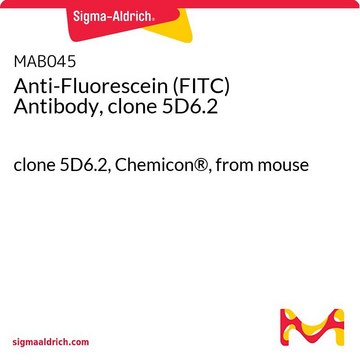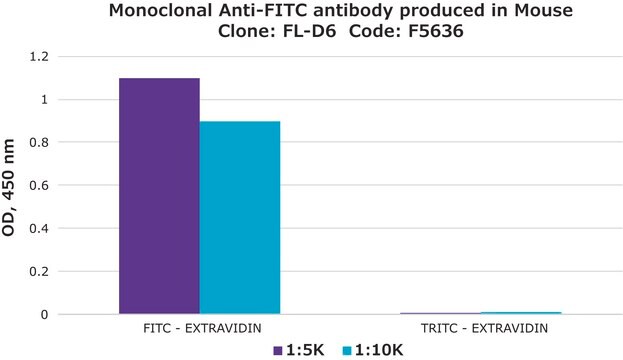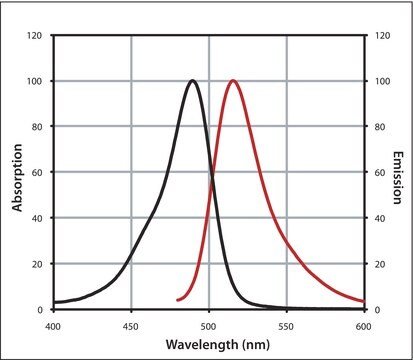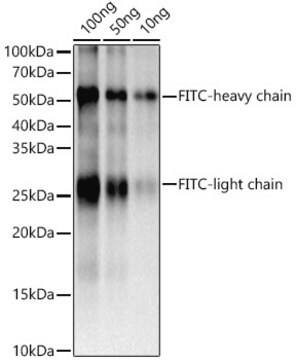SAB4200738
Anti-FITC antibody, Mouse monoclonal
clone FL-D6, purified from hybridoma cell culture
Sinonimo/i:
Anti-Fluorescein isothiocyanate
About This Item
Prodotti consigliati
Origine biologica
mouse
Livello qualitativo
Forma dell’anticorpo
purified from hybridoma cell culture
Tipo di anticorpo
primary antibodies
Clone
FL-D6, monoclonal
Forma fisica
buffered aqueous solution
Concentrazione
~1.0 mg/mL
tecniche
immunoblotting: 1.25-2.5 μg/mL using ExtrAvidin-FITC
immunohistochemistry: suitable
indirect ELISA: 0.15-0.3 μg/mL using 5 μg/ml ExtrAvidin-FITC
Isotipo
IgG1
Condizioni di spedizione
dry ice
Temperatura di conservazione
−20°C
modifica post-traduzionali bersaglio
unmodified
Descrizione generale
FITC (fluorescein isothiocyanate) is a fluorochrome dye that absorbs ultraviolet or blue light (with peak wavelength of approximately 495 nm) causing molecules to become excited and emit a visible yellow-green light (with peak wavelength of approximately 519 nm).
Specificità
Immunogeno
Applicazioni
- immunoblotting
- enzyme-linked immunosorbent assay (ELISA)
- immunohistochemistry
Azioni biochim/fisiol
Stato fisico
Stoccaggio e stabilità
Esclusione di responsabilità
Non trovi il prodotto giusto?
Prova il nostro Motore di ricerca dei prodotti.
Codice della classe di stoccaggio
10 - Combustible liquids
Punto d’infiammabilità (°F)
Not applicable
Punto d’infiammabilità (°C)
Not applicable
Certificati d'analisi (COA)
Cerca il Certificati d'analisi (COA) digitando il numero di lotto/batch corrispondente. I numeri di lotto o di batch sono stampati sull'etichetta dei prodotti dopo la parola ‘Lotto’ o ‘Batch’.
Possiedi già questo prodotto?
I documenti relativi ai prodotti acquistati recentemente sono disponibili nell’Archivio dei documenti.
Il team dei nostri ricercatori vanta grande esperienza in tutte le aree della ricerca quali Life Science, scienza dei materiali, sintesi chimica, cromatografia, discipline analitiche, ecc..
Contatta l'Assistenza Tecnica.








